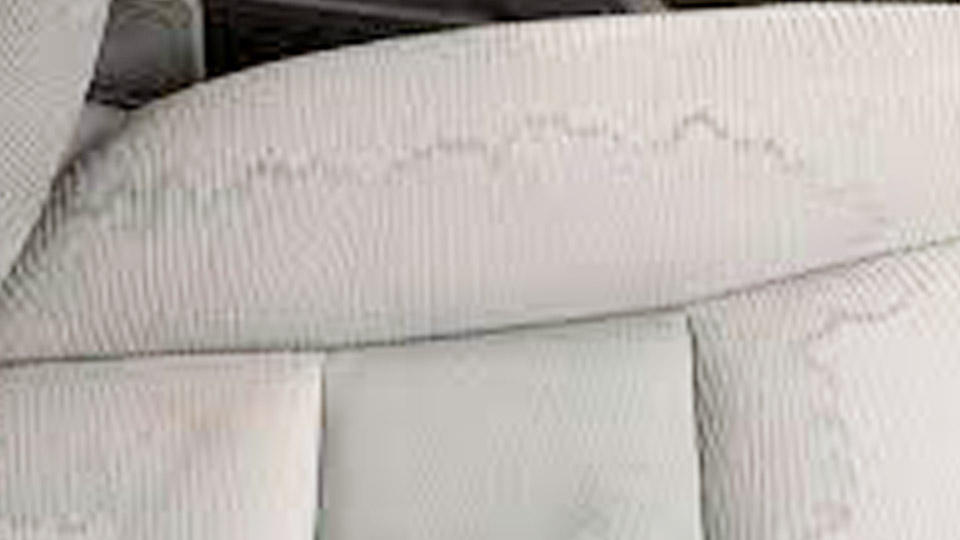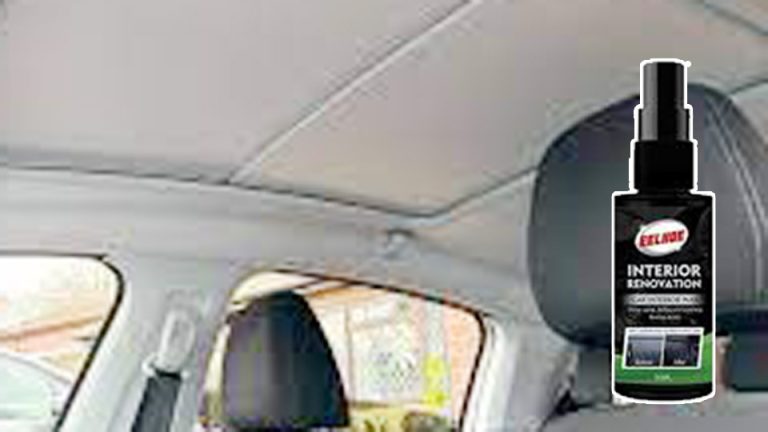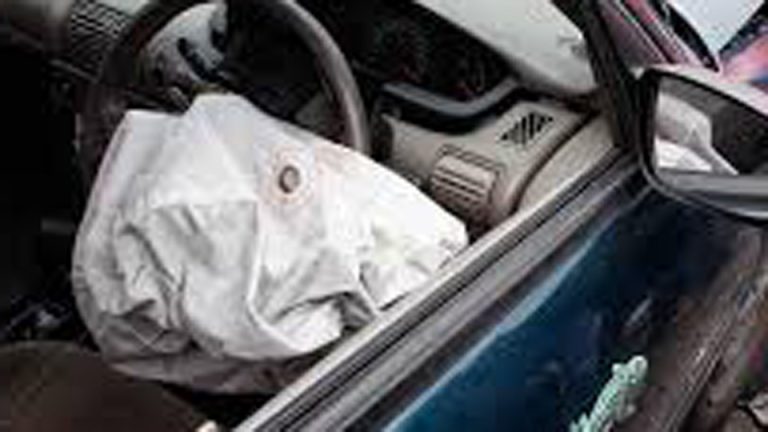Hey there! If you’ve ever spilled water on your car seats and noticed those stubborn, blotchy stains that just won’t go away, I feel you. Those marks can make your car’s interior look tired and dirty, even if the rest of it is spotless. I’ve been there with my old sedan and my current SUV, battling water stains that seemed to laugh at my cleaning attempts.
I’ve tried everything from household hacks to professional-grade products to get those permanent-looking stains out of fabric and leather car seats. I’m going to share what I’ve learned about tackling those tough water stains, based on my own hands-on experience.

Image by reddit
Whether you’re dealing with fabric or leather seats, I’ve got you covered with practical, USA-focused tips for your car. Let’s make those seats look brand new again!
Why Do Water Stains Become Permanent?
Water stains don’t always vanish when they dry because water can carry dirt, oils, or minerals deep into the seat material. I learned this when I spilled a bottle of water on my sedan’s fabric seats, and the stain dried with a weird, crusty outline.
Hard water, with its high mineral content, leaves chalky white marks, while dirt already on the seat can mix with water to create stubborn spots.
On leather, water can strip natural oils, leaving discolored patches. If left untreated, these stains set in, making them harder to remove. Understanding why they stick around helps you choose the right cleaning method to lift them out for good.
Know Your Seat Material
Before you start cleaning, figure out if your seats are fabric or leather. I made the mistake of using a fabric cleaner on my SUV’s leather seats once, and it left a sticky mess. Fabric seats, like cloth or velour, absorb water quickly, making stains more likely to set.
Leather seats, whether real or synthetic, need gentler care to avoid damage. Check your car’s manual or look at the seat tags to confirm the material. If you’re unsure, test a small, hidden spot first. Knowing your seat type guides your cleaning approach and prevents costly mistakes.
Gather the Right Supplies
Having the right tools makes all the difference. I used to grab whatever was in my kitchen, but that led to mixed results. Here’s what I keep in my cleaning kit now:
- Upholstery cleaner: For fabric seats, try Turtle Wax or Chemical Guys foam cleaner.
- Leather cleaner: Use Meguiar’s or Lexol for leather seats.
- Microfiber cloths: Soft and safe for all surfaces.
- Soft-bristled brush: A toothbrush or detailing brush for scrubbing.
- White vinegar: Breaks down mineral stains.
- Baking soda: Great for odors and tough fabric stains.
- Spray bottle: For mixing and applying solutions.
- Vacuum with upholstery attachment: To remove loose dirt.
- Clean towels: For drying seats.
- Leather conditioner: To restore leather after cleaning.
- Fabric protectant: Like Scotchgard, to prevent future stains.
These supplies are affordable and easy to find at auto stores or online. They’ve saved me from countless headaches while cleaning my cars.
Vacuum the Seats First
Always start by vacuuming. I skipped this step once and ended up rubbing dirt deeper into the fabric, making the stain worse. Use a vacuum with an upholstery or brush attachment to suck up loose dirt, crumbs, and dust. Focus on seams and crevices where grime hides.
My SUV’s seats were a mess from my kids’ snacks, and vacuuming cleared the way for better cleaning. Take 5-10 minutes to do this thoroughly—it sets you up for success.
Test Your Cleaning Solution
Before you go all in, test your cleaner on a hidden spot. I learned this the hard way when a new cleaner faded a patch of my hatchback’s seats. Dab a small amount on an out-of-sight area, like under the seat or along the side.
Wait a few minutes to check for discoloration or damage. Fabric and leather react differently, so testing saves you from a costly mistake. If the test spot looks good, you’re ready to tackle the stain.
Cleaning Water Stains on Fabric Seats
Fabric seats are tricky because they soak up water like a sponge. Here’s how I handle water stains on fabric:
Use an Upholstery Cleaner
Start with a good upholstery cleaner. I like foam cleaners because they’re easy to control. Spray the cleaner onto a microfiber cloth, not directly on the seat—spraying can soak the fabric too much. Rub gently in circles over the stain.
I had a water stain on my sedan’s driver’s seat from a spilled bottle, and Turtle Wax foam cleaner lifted it out after a few passes. For deeper stains, use a soft brush to work the cleaner into the fabric. Don’t scrub too hard—it can fray the material. Work in small sections to keep things manageable.
Try a Vinegar Solution
If the upholstery cleaner doesn’t do the trick, white vinegar is my go-to for stubborn stains. I used this on a hard water stain in my SUV that left a white, chalky mark. Mix one part white vinegar with two parts warm water in a spray bottle. Lightly mist the stain—don’t drench it.
Let it sit for 5-10 minutes to break down minerals. Blot with a microfiber cloth, then rinse with a damp cloth to remove the vinegar smell. This worked like magic on my seats, leaving them spotless.
Use Baking Soda for Set-In Stains
For really tough stains or musty smells, baking soda is a lifesaver. I had a water stain in my hatchback that smelled funky after sitting wet for too long. Sprinkle baking soda over the stain and let it sit for 15-20 minutes. It absorbs odors and loosens dirt.
Scrub gently with a soft brush, then vacuum it up. For extra stubborn stains, make a paste with baking soda and water, apply it, and let it sit for an hour before scrubbing and vacuuming. My seats smelled fresh and looked clean after this.
Cleaning Water Stains on Leather Seats
Leather seats need a gentler touch to avoid damage. Here’s how I clean water stains on leather:
Use a Leather Cleaner
Start with a leather-specific cleaner. I use Meguiar’s or Lexol because they’re gentle but effective. Apply a small amount to a microfiber cloth and rub the stain in circles. I had a water stain on my SUV’s leather passenger seat from a leaky cup, and a leather cleaner took it out in minutes.
For textured areas or seams, use a soft brush to get into the creases. Don’t use too much cleaner—it can strip the leather’s finish.
Address Mineral Stains with Vinegar
Hard water stains on leather can leave white marks. I dealt with this on my sedan’s seats after a spill from a mineral-heavy water bottle. Mix a solution of one part vinegar to four parts water. Dab it onto the stain with a microfiber cloth and let it sit for a minute.
Wipe it off with a damp cloth, then dry with a clean towel. Be gentle—leather doesn’t like too much moisture. This method worked without harming the leather’s shine.
Condition the Leather
After cleaning, always condition leather seats. Water stains can dry out the leather, and cleaning can strip oils. I learned this when my sedan’s seats started cracking after I skipped conditioning. Apply a leather conditioner, like Lexol, with a microfiber cloth in thin, even layers.
Rub it in gently and let it sit for 10-15 minutes. Buff off excess with a clean cloth. My seats looked glossy and felt soft after this step. Condition every 3-4 months to keep leather hydrated.
Rinse and Blot to Remove Residue
Whether you’re cleaning fabric or leather, rinse off any leftover cleaner to avoid stickiness. I made the mistake of skipping this once, and my seats felt tacky for days. Use a clean microfiber cloth dampened with warm water to blot the cleaned areas.
Don’t soak the fabric or leather—just use enough water to lift residue. Blot, don’t rub, to avoid spreading dirt. Then, dry with a clean towel. I press down hard to soak up as much moisture as possible.
Dry the Seats Thoroughly
Drying is critical to prevent new stains or mold. I learned this after leaving my hatchback’s seats damp overnight—yep, they got musty. After blotting, leave your car doors open for a few hours to air dry. If it’s humid, use a fan or a hairdryer on the cool setting.
I’ve also parked my car in the sun with windows cracked to speed up drying. Make sure the seats are completely dry before sitting on them—I got wet pants once from rushing this step!
Protect Your Seats from Future Stains
Once your seats are clean, protect them to make future stains easier to handle. I started using a fabric protectant spray on my SUV’s seats after dealing with repeated spills. Products like Scotchgard or 303 Fabric Guard work great for fabric seats.
For leather, a UV protectant spray, like 303 Aerospace, prevents fading and drying. Spray lightly and evenly, following the product’s instructions. Let it dry completely before using the car. I also keep a towel in my car for quick spill protection, especially with kids around.
Comparing Cleaning Methods for Water Stains
Here’s a table to help you choose the best method for your seats:
| Method | Best For | Pros | Cons |
|---|---|---|---|
| Upholstery Cleaner | Fabric seats, general stains | Easy to use, widely available | May need multiple passes for tough stains |
| Leather Cleaner | Leather seats, water marks | Gentle, restores shine | Can be pricey, needs conditioning after |
| Vinegar Solution | Hard water stains on fabric/leather | Cheap, effective on minerals | Smell takes time to fade |
| Baking Soda | Fabric seats, odors, set-in stains | Absorbs smells, lifts dirt | Messy, requires vacuuming |
| Fabric/Leather Protectant | Preventing future stains | Repels water and dirt | Needs reapplication every few months |
Step-by-Step Process to Remove Water Stains
Here’s how I tackle permanent water stains, step by step:
- Vacuum the seats. Use an upholstery attachment to remove loose dirt.
- Test your cleaner. Apply a small amount to a hidden spot and check for damage.
- Apply upholstery or leather cleaner. Use a microfiber cloth to rub gently in small sections.
- Use vinegar for hard water stains. Mist a vinegar-water mix, let it sit, and blot.
- Try baking soda for fabric stains. Sprinkle, scrub, and vacuum for odors or tough marks.
- Rinse with a damp cloth. Blot to remove cleaner residue, then dry with a towel.
- Condition leather seats. Apply conditioner to keep leather soft and hydrated.
- Dry thoroughly. Air dry with open doors or use a fan.
- Apply protectant. Use fabric or leather protectant to prevent future stains.
This process takes 30-60 minutes, depending on the stain’s severity. It’s straightforward and works wonders.
When to Call a Professional
Most water stains are DIY-friendly, but some need a pro. If the stain is deep, the fabric is delicate, or you’re dealing with mold, a professional detailer can help. I took my SUV to a detailer once when a water stain turned musty after a rainy week.
They used a steam cleaner and specialized products to save the seats. Professional detailing costs $100-$300, depending on the job, but it’s worth it for tough cases or if you want a flawless finish.
Advice for Keeping Car Seats Stain-Free
Here’s what I’ve learned to prevent water stains:
- Blot spills immediately. Use a towel to soak up water before it sets.
- Vacuum weekly. Keep dirt from mixing with spills.
- Use a protectant spray. Apply fabric or leather protectant every 3-4 months.
- Keep a cleaning kit in your car. Microfiber cloths, cleaner, and a brush are great for quick fixes.
- Avoid drinks in the car. It’s tough, but it cuts down on spills.
- Check for leaks. Fix leaky windows or sunroofs to prevent water damage.
These habits have kept my SUV’s seats looking good, even with daily chaos.
Conclusion
Permanent water stains on car seats can feel like a lost cause, but I’ve learned they’re not impossible to beat. From vinegar hacks to professional-grade cleaners, I’ve tackled those stubborn marks on both fabric and leather seats, and it’s so satisfying to see the results. With the right tools, a bit of patience, and regular care, you can get those stains out and keep your car’s interior looking sharp.
Whether you’re prepping for a road trip or just want a clean ride, your seats deserve to shine. Grab your supplies, put on some music, and get to work—your car will thank you! Here’s to spotless seats and happy drives!
FAQs
Can water stains on car seats become permanent?
If untreated, water stains can set in, especially with hard water or dirt. Act fast with the right cleaner to prevent permanent marks.
What’s the best cleaner for fabric car seats?
An upholstery cleaner like Turtle Wax or Chemical Guys works great. For tough stains, try a vinegar-water mix or baking soda.
Can I use vinegar on leather seats?
Yes, but dilute it—one part vinegar to four parts water. Dab lightly, wipe off quickly, and condition afterward to avoid drying the leather.
How do I prevent water stains from coming back?
Use a fabric or leather protectant spray, like Scotchgard or 303. Blot spills right away and keep seats clean.
Will cleaning water stains cause mold?
If you don’t dry the seats completely, mold can form. Blot well and air dry with open doors or a fan.
How often should I clean my car seats?
Vacuum weekly and spot-clean spills immediately. Do a full clean every 2-3 months to prevent stains.
When should I call a professional for water stains?
If stains are deep, moldy, or on delicate fabric, a detailer can help. They use steam cleaners and special products for tough cases.




